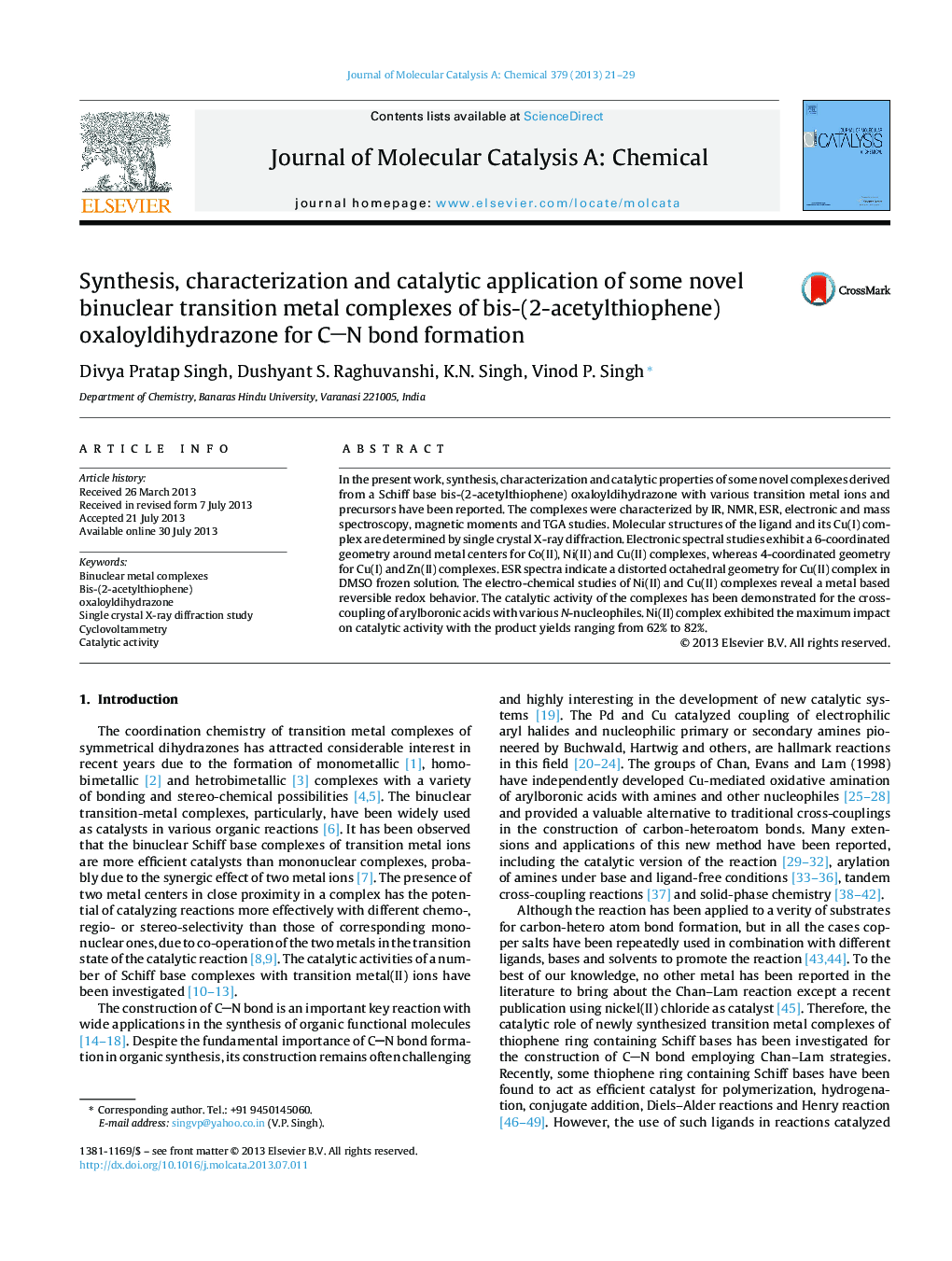| Article ID | Journal | Published Year | Pages | File Type |
|---|---|---|---|---|
| 65640 | Journal of Molecular Catalysis A: Chemical | 2013 | 9 Pages |
•Some metal complexes of bis-(2-acetylthiophene) oxaloyldihydrazone are synthesized.•Structure of ligand and its Cu(I) complex was determined by single crystal study.•Catalytic applications of the complexes were investigated for CN bond formation.•Ni(II) complex exhibited the maximum impact on catalytic activity.•This offers an excellent option for CN bond formation involving Chan–Lam coupling.
In the present work, synthesis, characterization and catalytic properties of some novel complexes derived from a Schiff base bis-(2-acetylthiophene) oxaloyldihydrazone with various transition metal ions and precursors have been reported. The complexes were characterized by IR, NMR, ESR, electronic and mass spectroscopy, magnetic moments and TGA studies. Molecular structures of the ligand and its Cu(I) complex are determined by single crystal X-ray diffraction. Electronic spectral studies exhibit a 6-coordinated geometry around metal centers for Co(II), Ni(II) and Cu(II) complexes, whereas 4-coordinated geometry for Cu(I) and Zn(II) complexes. ESR spectra indicate a distorted octahedral geometry for Cu(II) complex in DMSO frozen solution. The electro-chemical studies of Ni(II) and Cu(II) complexes reveal a metal based reversible redox behavior. The catalytic activity of the complexes has been demonstrated for the cross-coupling of arylboronic acids with various N-nucleophiles. Ni(II) complex exhibited the maximum impact on catalytic activity with the product yields ranging from 62% to 82%.
Graphical abstractSome novel binuclear transition metal complexes of bis-(2-acetylthiophene) oxaloyldihydrazone have been synthesized, characterized and their catalytic applications for CN bond formation are reported.Figure optionsDownload full-size imageDownload high-quality image (153 K)Download as PowerPoint slide
